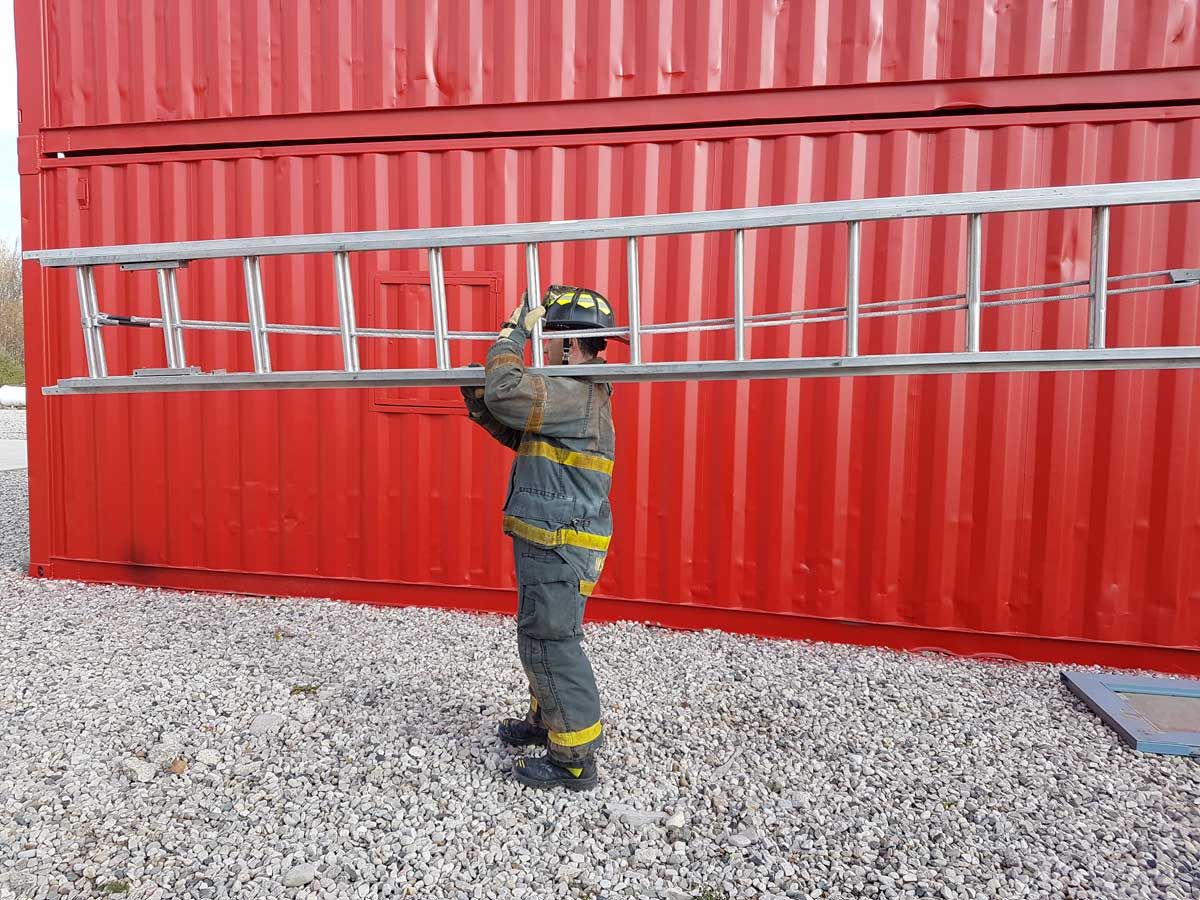

Articles
How To Carry Ladder
Modified: May 6, 2024
Discover the best articles on how to carry a ladder safely and efficiently. Get expert tips and techniques for ladder transportation and handling.
(Many of the links in this article redirect to a specific reviewed product. Your purchase of these products through affiliate links helps to generate commission for Storables.com, at no extra cost. Learn more)
Introduction
Carrying a ladder can be a daunting task, especially if it is large and cumbersome. However, with the right techniques and safety precautions, you can easily transport a ladder from one location to another. In this article, we will explore the best practices for carrying a ladder, ensuring both your safety and the protection of the ladder itself.
Before we delve into the details, it is important to emphasize the significance of ladder safety. Ladders are essential tools in many industries and home improvement projects, but they can also pose serious risks if not handled properly. It is crucial to familiarize yourself with safety guidelines, ensuring you are equipped with the necessary knowledge to prevent accidents and injuries.
When it comes to carrying a ladder, there are various types and sizes to consider, each with specific handling techniques. Whether you are moving a single-section ladder, an extension ladder, or a step ladder, it is crucial to approach the task with caution and proper form.
In addition to discussing carrying techniques, we will also explore the use of ladder carrying aids that can make the process easier and more efficient. These aids can reduce strain on your body, provide better balance, and help distribute the weight of the ladder evenly.
By following the guidelines and recommendations outlined in this article, you will be well-equipped to safely transport any type of ladder, ensuring both your own well-being and the longevity of the ladder itself. Let’s dive in and explore the world of ladder carrying techniques!
Key Takeaways:
- Prioritize safety by inspecting the ladder, choosing the right type, and following proper carrying techniques to prevent accidents and ensure your well-being.
- Utilize ladder carrying aids such as straps, carts, handles, and hooks to reduce strain, improve balance, and make the transportation process more convenient.
Read more: Which Ladder Is Carried With The Tip Forward
Safety Precautions
Before you even attempt to carry a ladder, it is essential to prioritize safety. Ladders can be unstable if not handled correctly, leading to accidents and potential injuries. By following these safety precautions, you can minimize the risks and create a safe environment for yourself and those around you.
1. Inspect the ladder: Before using any ladder, ensure it is in good condition. Check for any cracks, loose bolts, or other signs of damage that may compromise its stability. If you notice any defects, do not use the ladder and arrange for repairs or replacement.
2. Choose the right ladder for the job: Using the appropriate ladder for the task at hand is crucial. Make sure the ladder’s height and weight capacity are suitable for the job. Using an undersized or overloaded ladder can lead to instability and accidents.
3. Clear the area: Before attempting to carry a ladder, clear the surrounding area of any obstacles or hazards. This includes removing debris, ensuring the floor is stable, and keeping the path clear from any potential tripping hazards.
4. Wear proper footwear: It is crucial to wear sturdy, non-slip footwear when handling a ladder. This will provide better stability and reduce the chances of slips or falls.
5. Use gloves: Wearing gloves can provide a better grip on the ladder, reducing the chances of accidents caused by slips. Choose gloves that are suitable for the task, providing both dexterity and protection.
6. Maintain three-point contact: When ascending or descending a ladder, always maintain three-point contact. This means using both hands and one foot or both feet and one hand on the ladder at all times for stability.
7. Do not overload the ladder: Never exceed the ladder’s weight capacity. Overloading a ladder can cause it to become unstable and increase the risk of accidents. Take into account your bodyweight and any tools or materials you are carrying.
8. Avoid overreaching: It is important to maintain your balance on a ladder. Avoid overreaching as it can cause you to lose stability and potentially fall. Instead, reposition the ladder when needed to ensure you can safely reach your work area.
9. Use proper lifting techniques: When lifting and carrying a ladder, use proper lifting techniques to avoid strain and injuries. Bend at your knees and use your legs to lift the ladder, keeping your back straight.
10. Seek assistance when needed: If the ladder is too heavy or too large to carry on your own, seek assistance. Lifting and carrying a ladder should not be done alone if it exceeds your capabilities.
By following these safety precautions, you can greatly reduce the risks associated with carrying a ladder. Remember, safety should always be your top priority when working with ladders, ensuring both your well-being and the successful completion of your tasks.
Selecting the Right Ladder
Before you can effectively carry a ladder, you need to ensure that you have chosen the right one for the task at hand. Selecting the appropriate ladder is essential for both your safety and the successful completion of your project. Here are some factors to consider when choosing a ladder:
1. Height and Reach: Determine the height you need to reach with your ladder. Consider the maximum height of the project, taking into account the height of the ladder itself and your own comfortable working height. It is important to choose a ladder that can safely reach the desired height without the need for excessive reaching or stretching.
2. Ladder Type: There are different types of ladders available, each designed for specific tasks. The most common types include extension ladders, step ladders, and multi-purpose ladders. Extension ladders are ideal for reaching high places, step ladders provide stability and convenience for shorter tasks, and multi-purpose ladders offer versatility for various projects.
3. Weight Capacity: Consider the weight capacity of the ladder to ensure it can support your body weight, as well as any tools or materials you may need to carry. Exceeding the ladder’s weight capacity can compromise stability and pose a significant safety risk.
4. Material: Ladders can be made from various materials, including aluminum, fiberglass, and wood. Each material has its own advantages and considerations. Aluminum is lightweight, durable, and resistant to rust. Fiberglass ladders are non-conductive, making them ideal for electrical work. Wood ladders are sturdy but may require more maintenance.
5. Portability: If you anticipate needing to carry the ladder frequently or transport it to different locations, consider its portability. Look for ladders that are lightweight and feature handles or carrying aids to make transportation easier.
6. Safety Features: Check for safety features such as non-slip feet, rung locks, and stabilizing bars. These features can enhance the stability and safety of the ladder, providing you with peace of mind during use.
7. Budget: Consider your budget when selecting a ladder. While it is important to invest in a quality ladder that meets your needs, there are options available at different price points. Compare prices and features to find the best value for your money.
By carefully considering these factors, you can select the right ladder for your specific needs. This will not only make it easier to carry the ladder but also ensure that you can work safely and efficiently. Remember to always prioritize safety and choose a ladder that meets the necessary requirements for your projects.
Carrying Techniques
Carrying a ladder may seem simple, but it requires proper technique to ensure your safety and the preservation of the ladder. Each type of ladder requires specific handling techniques. Let’s explore the recommended carrying techniques for different ladder types:
1. Carrying a Single-Section Ladder: Single-section ladders are typically long and straight, making them more challenging to carry. Follow these steps:
- Stand facing the ladder and position yourself in the center.
- Grasp the ladder firmly with both hands, placing one hand near the top and the other hand near the bottom.
- Lift the ladder by bending your knees and using your legs, keeping your back straight.
- Securely hold the ladder against your body, keeping a balanced grip.
- Walk slowly and carefully, using your legs to support the ladder as you move.
- Ensure your path is clear of obstacles and maintain clear visibility.
2. Carrying an Extension Ladder: Extension ladders consist of multiple sections that can be extended to reach various heights. Here’s how to safely carry an extension ladder:
- Working with a partner is recommended for carrying and maneuvering extension ladders.
- Position one person at the base of the ladder, and the other person at the top.
- Both individuals should grasp the ladder near the middle section, ensuring a balanced grip.
- Lift the ladder by bending your knees, using your legs to provide the lifting force.
- Ensure clear communication with your partner to coordinate movements while carrying the ladder.
- Walk slowly and maintain stability as you transport the ladder to the desired location.
- When necessary, use a ladder carrying aid or dolly to assist with transporting heavier or longer extension ladders.
3. Carrying a Step Ladder: Step ladders feature a self-supporting frame and are easier to carry due to their compact size. Follow these steps when carrying a step ladder:
- Stand facing the ladder and grasp the steps securely with both hands.
- Lean the ladder slightly toward you to balance the weight.
- Keep your back straight and lift the ladder using your legs.
- Hold the ladder against your body with a firm grip.
- Walk slowly and cautiously to the desired location, ensuring stability and clear visibility.
- If the step ladder has a built-in handle, use it to provide better control during transportation.
Remember, take your time when carrying a ladder and be cautious of your surroundings. Maintain a firm grip, use proper lifting techniques, and always prioritize your safety and that of others. By following these carrying techniques, you can transport your ladder with confidence and minimize the risk of accidents.
Carrying a Single-Section Ladder
Single-section ladders are often long and straight, making them more challenging to carry. However, with the right technique and proper safety precautions, you can easily transport a single-section ladder from one location to another. Here are the steps to safely carry a single-section ladder:
- Prepare yourself: Before attempting to carry the ladder, it is important to assess the surroundings and ensure you have a clear path. Remove any obstacles that may impede your movement and make sure the area is well-lit to maintain visibility.
- Position yourself: Stand facing the ladder and position yourself in the center, ensuring that your body is aligned with the ladder’s length.
- Grasp the ladder: Place one hand near the top of the ladder and the other hand near the bottom, ensuring a firm grip on both sides. Your hands should be positioned on the rungs or side rails of the ladder for stability.
- Lift the ladder: Bend your knees and use your leg muscles to lift the ladder off the ground, keeping your back straight and avoiding any twisting or jerking motions. The power should come from your legs, not your back.
- Hold the ladder securely: Once the ladder is lifted, hold it securely against your body. This will help distribute the weight evenly and provide better stability as you move.
- Walk slowly and carefully: Take small, deliberate steps while carrying the ladder, using your legs to support its weight. Avoid sudden movements or changes in direction to maintain balance and control.
- Ensure clear visibility: As you carry the ladder, be aware of your surroundings and make sure you have clear visibility. Keep your path clear of obstacles and pay attention to potential hazards, such as uneven surfaces or tripping hazards.
It is crucial to use proper lifting techniques and maintain good posture when carrying a single-section ladder. This will help prevent strains, sprains, and other injuries. Remember to engage your leg muscles, keeping your back straight, and using your hands to provide a secure grip.
If the ladder is especially heavy or if you need to transport it over a long distance, consider using a ladder carrying aid or dolly to assist you. These tools can help reduce the strain on your body and provide additional support and stability.
By following these steps and taking necessary precautions, you can safely transport a single-section ladder without compromising your well-being or the integrity of the ladder itself.
When carrying a ladder, always use a firm grip and keep it close to your body to maintain balance. Make sure the ladder is secure and free from any obstacles before lifting.
Read more: How To Carry Mattress Up Stairs
Carrying an Extension Ladder
Extension ladders consist of multiple sections that can be extended to reach various heights. While they may be longer and more cumbersome than single-section ladders, with the right technique and precautions, you can safely carry an extension ladder. Here is a step-by-step guide on how to carry an extension ladder:
- Work with a partner: Carrying an extension ladder is often easier and safer with the help of a partner. Find someone to assist you in maneuvering the ladder, especially if it is a larger or heavier model.
- Position yourselves: One person should be positioned at the base of the ladder, while the other person should be at the top. This ensures that the ladder is balanced and evenly supported during transportation.
- Both grasp the ladder: Each person should firmly grasp the ladder near the middle section, ensuring a balanced grip. The hands should be positioned on the rungs or side rails for stability.
- Lift the ladder: Using proper lifting techniques, both individuals should lift the ladder together. Bend your knees, engage your leg muscles, and lift with the strength of your legs, avoiding any strain on your back.
- Communicate and coordinate: While carrying the ladder, clear communication and coordinated movement are crucial. Stay in sync with your partner, ensuring that you both step and adjust your grip at the same time to maintain balance and control.
- Move slowly and carefully: Take small, deliberate steps while carrying the ladder, using your legs for support. Avoid sudden movements or jerking motions that could destabilize the ladder. Walk slowly and steadily, ensuring stability as you transport the ladder.
- Ensure clear pathways: As you carry the ladder, be aware of your surroundings and ensure that your path is clear from obstacles. Clear away any debris or objects that may interfere with your movement, and maintain clear visibility at all times.
- Consider using a ladder carrying aid: If the extension ladder is particularly heavy or difficult to carry, consider using a ladder carrying aid or dolly. These tools can help distribute the weight and provide additional support during transportation.
It is important to maintain a firm grip on the ladder and remain focused on stability and safety. Clear communication and synchronized movements with your partner will make the process smoother and reduce the risk of accidents or injuries.
Remember to use proper lifting techniques, engage your leg muscles, and keep your back straight to avoid strain or injury. By following these guidelines, you can safely carry an extension ladder and navigate it to the desired location with confidence.
Carrying a Step Ladder
Step ladders are versatile and self-supporting, making them a popular choice for various tasks. They are typically more compact and lighter than other types of ladders, which makes carrying them easier. However, it is still important to follow proper techniques to ensure your safety and the protection of the ladder. Here is a step-by-step guide on how to carry a step ladder:
- Position yourself: Stand facing the step ladder with one side of it in front of you. Position yourself so that you are centered with the ladder and prepare to lift it.
- Grasp the ladder: Using both hands, firmly grasp the steps or rungs of the ladder near the middle section. Make sure your grip is secure and evenly distributed.
- Lean the ladder: Slightly lean the step ladder toward you to balance the weight. This will make it easier to lift and carry while maintaining control.
- Lift the ladder: Bend your knees and engage your leg muscles to lift the step ladder off the ground. Keep your back straight and use the power of your legs to lift, rather than straining your back.
- Hold the ladder: As you lift the ladder, hold it securely against your body with a firm grip. This will provide better stability and control as you carry it.
- Walk carefully and cautiously: Take small, deliberate steps while carrying the step ladder, using your legs to support its weight. Walk slowly and maintain your balance to avoid any sudden movements that could cause the ladder to become unstable.
- Clear your path: Ensure that your path is clear from obstacles or obstructions. Pay attention to potential hazards such as uneven surfaces or tripping hazards that could lead to accidents.
- Utilize the built-in handle (if available): Many step ladders come with a built-in handle on the top or side. If your ladder has one, use it to provide extra control and stability while carrying the ladder.
When carrying a step ladder, remember to maintain a firm grip, engage your leg muscles, and keep a stable posture. Be mindful of your surroundings and take caution when moving the ladder to prevent any accidents.
If the step ladder is particularly heavy or you need to transport it a longer distance, consider using a ladder carrying aid or dolly. These tools can help distribute the weight evenly and provide additional support throughout the transportation process.
By following these steps and using proper carrying techniques, you can safely transport a step ladder and easily maneuver it to the desired location, ensuring both your safety and the protection of the ladder itself.
Using Ladder Carrying Aids
Carrying a ladder can be physically demanding, especially if it is large or heavy. Fortunately, there are ladder carrying aids available that can make the task easier and more efficient. These aids are designed to distribute the weight of the ladder and provide better balance, reducing strain on your body. Here are some common ladder carrying aids and their benefits:
- Ladder Carrying Straps: Ladder carrying straps are adjustable straps that attach to the ladder, allowing you to carry it on your shoulder or across your body. These straps distribute the weight of the ladder evenly and leave your hands free to navigate obstacles or open doors. They are particularly useful for carrying single-section or extension ladders.
- Ladder Carts and Dollies: Ladder carts and dollies are wheeled devices designed specifically for transporting ladders. These devices feature straps or clamps that secure the ladder, allowing you to easily maneuver it without lifting its full weight. Ladder carts are ideal for longer distances or when you need to move heavy or oversized ladders.
- Ladder Assist Handles: Ladder assist handles are attachments that provide additional handholds on the ladder. They can be installed near the top or sides of the ladder to improve your grip and stability while carrying it. These handles are especially helpful for step ladders or extension ladders with minimal gripping points.
- Ladder Hooks: Ladder hooks are accessories that attach to the ladder and allow you to hang it securely from your shoulder. These hooks distribute the weight of the ladder, providing better balance and freeing up your hands to carry other tools or materials. They are convenient when you need quick access to the ladder while working.
When using ladder carrying aids, it is important to follow the manufacturer’s instructions for proper installation and usage. Ensure that the aids are securely attached to the ladder and that the ladder is stable and balanced before transporting it.
It is also important to note that while ladder carrying aids can make the task easier, they do not replace proper lifting techniques or safety precautions. Always use good posture, engage your leg muscles, and be mindful of your surroundings when carrying a ladder, even with the assistance of these aids.
By utilizing ladder carrying aids, you can significantly reduce the strain on your body and improve your overall experience when transporting ladders. These aids also help safeguard the ladder from potential damage that may occur during the carrying process.
Remember, safety should always be a priority. Choose the appropriate ladder carrying aid for the type of ladder you are using and ensure that it is properly installed and used according to the manufacturer’s guidelines. By incorporating ladder carrying aids into your routine, you can enhance efficiency, reduce the risk of accidents, and prolong the lifespan of your ladders.
Conclusion
Carrying a ladder may seem like a simple task, but it requires proper technique, safety precautions, and consideration of the ladder type. By following the guidelines outlined in this article, you can ensure your safety, preserve the lifespan of your ladder, and make the carrying process more efficient. Here are some key takeaways:
1. Prioritize safety: Always prioritize safety when working with ladders. Inspect the ladder for any damage, clear the area of obstacles, wear appropriate footwear and gloves, and follow proper lifting techniques. Your safety should be the utmost importance to prevent accidents and injuries.
2. Select the right ladder: Choose a ladder that suits your needs in terms of height, weight capacity, material, and portability. Having the correct ladder for the task at hand ensures stability and safety during transportation.
3. Follow carrying techniques: Different ladders require different carrying techniques. Whether you are handling single-section ladders, extension ladders, or step ladders, be sure to follow the recommended steps, maintain a firm grip, and use your legs, not your back, for support.
4. Utilize ladder carrying aids: Ladder carrying aids, such as straps, carts, handles, and hooks, can greatly assist in the carrying process. These aids distribute the weight of the ladder and provide better balance, reducing strain on your body and making transportation more convenient.
By incorporating these practices into your routine and maintaining a focus on safety, you can confidently carry ladders without compromising your well-being. Remember to assess your surroundings, take your time, and communicate clearly if you are working with a partner. Additionally, seek assistance for ladders that are too heavy or unwieldy to carry alone.
Carrying a ladder is an essential skill, whether you are a professional tradesperson, a DIY enthusiast, or simply maintaining your home. By following the tips and techniques discussed in this article, you can ensure that the ladder is transported safely and efficiently, allowing you to complete your tasks with confidence and ease.
Remember, always prioritize safety, select the appropriate ladder for the job, follow proper carrying techniques, and consider using ladder carrying aids when necessary. With these practices in mind, you can tackle any ladder-carrying task with confidence, knowing that you are taking the necessary precautions to protect both yourself and your ladder.
Now that you've mastered ladder carrying, why not tackle more home projects with confidence? Our guide on DIY home improvement offers practical advice and creative ideas to transform your space with your own hands. From simple repairs to full renovations, you'll find everything needed to enhance your home's comfort and appeal. Don't miss out on unlocking your potential as a home improvement wizard!
Frequently Asked Questions about How To Carry Ladder
Was this page helpful?
At Storables.com, we guarantee accurate and reliable information. Our content, validated by Expert Board Contributors, is crafted following stringent Editorial Policies. We're committed to providing you with well-researched, expert-backed insights for all your informational needs.
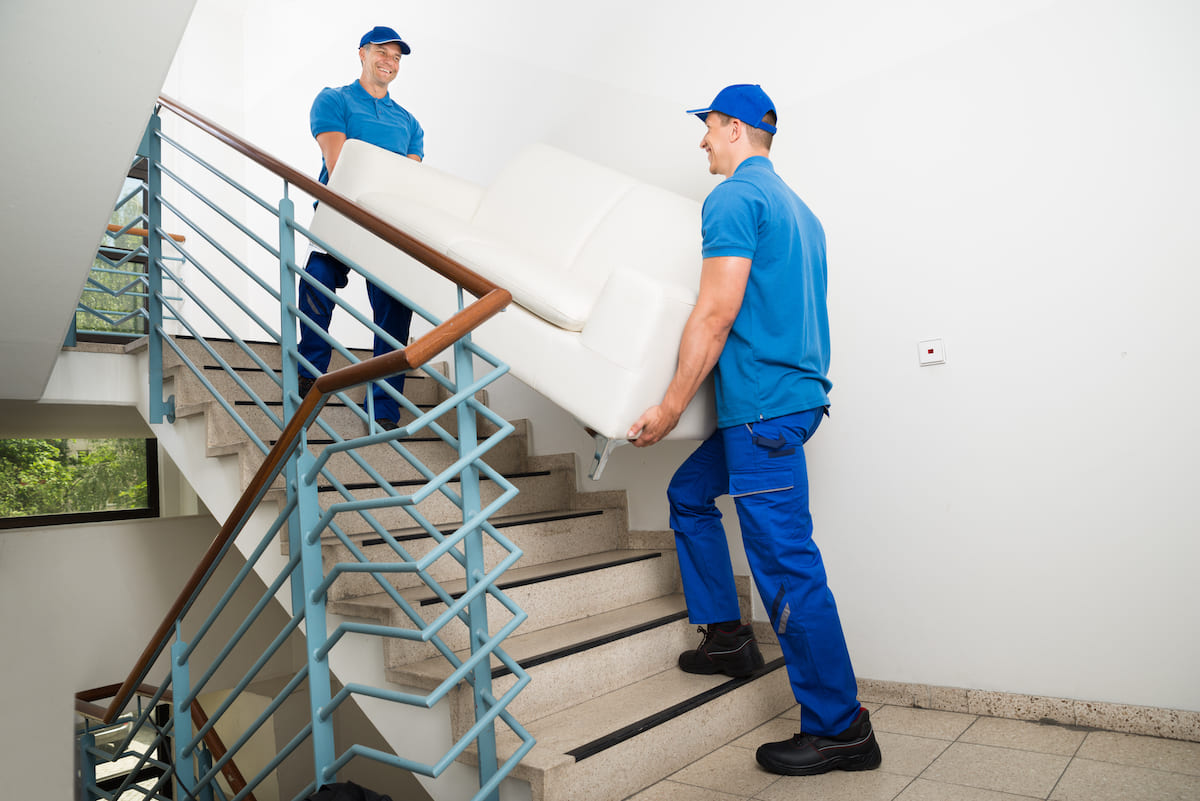




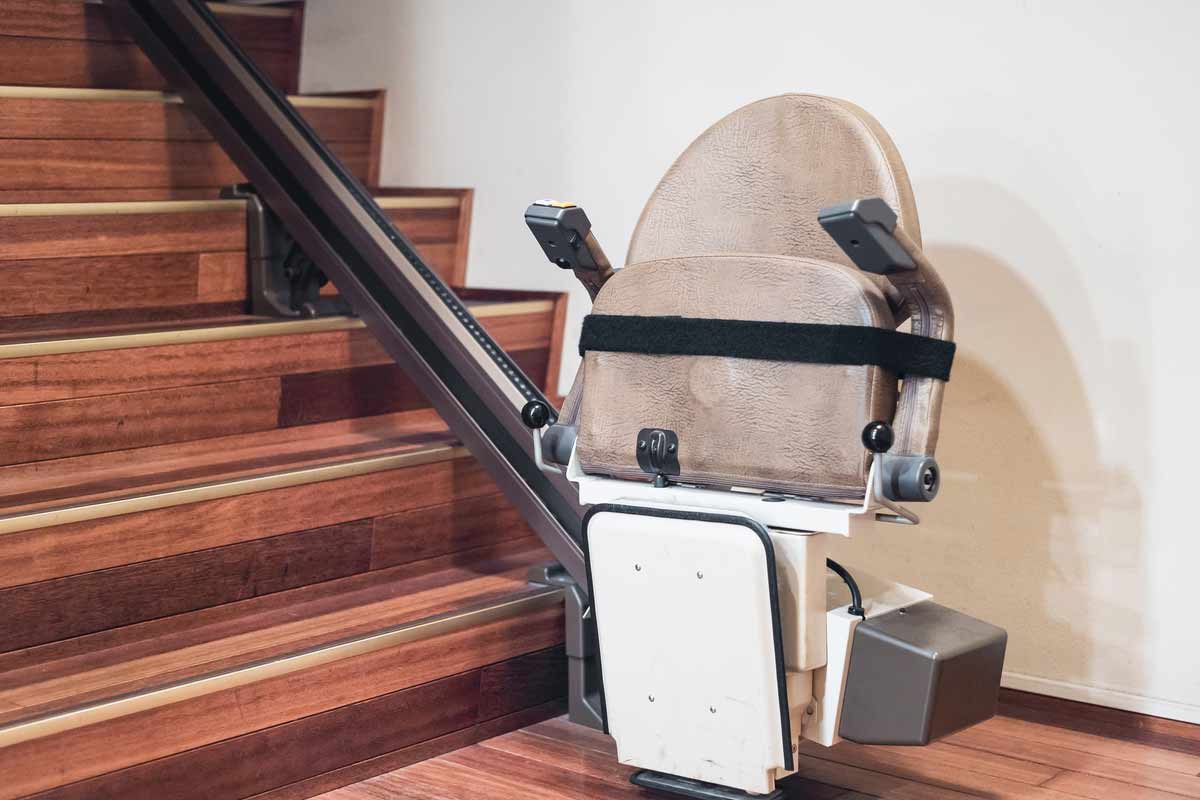
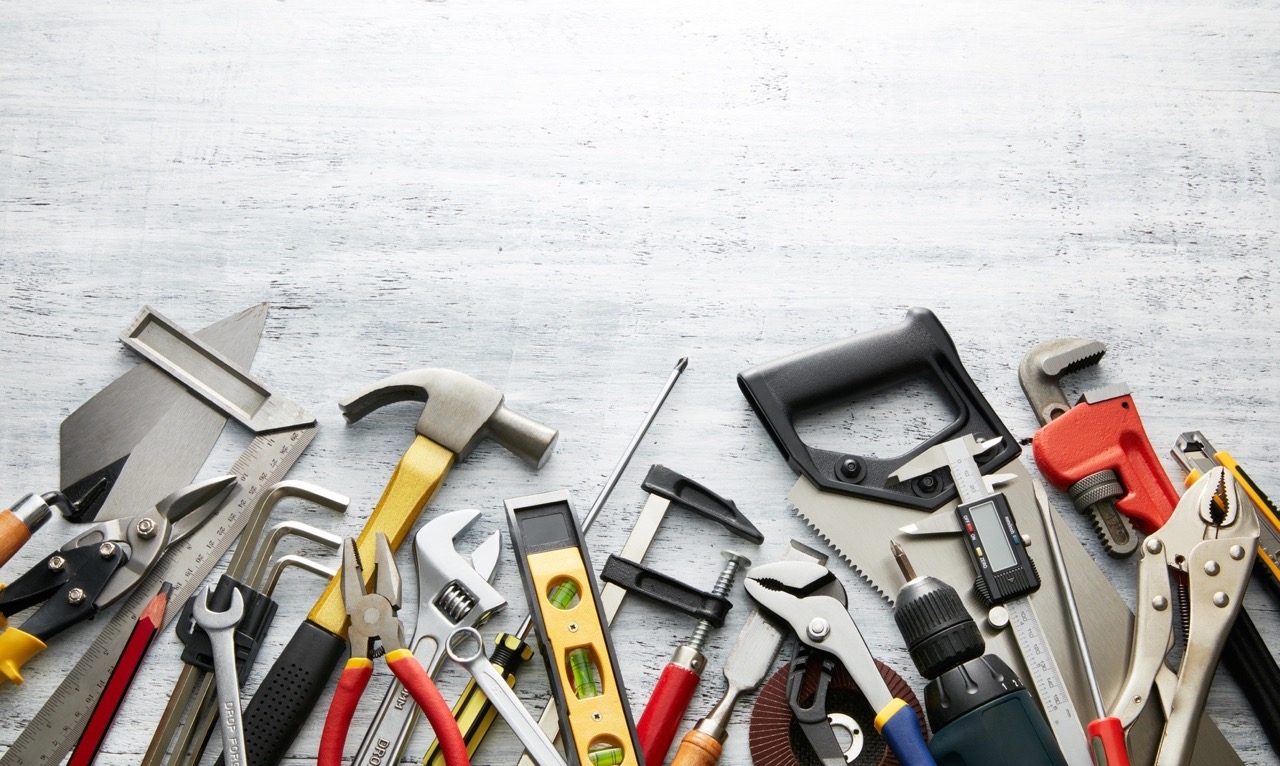

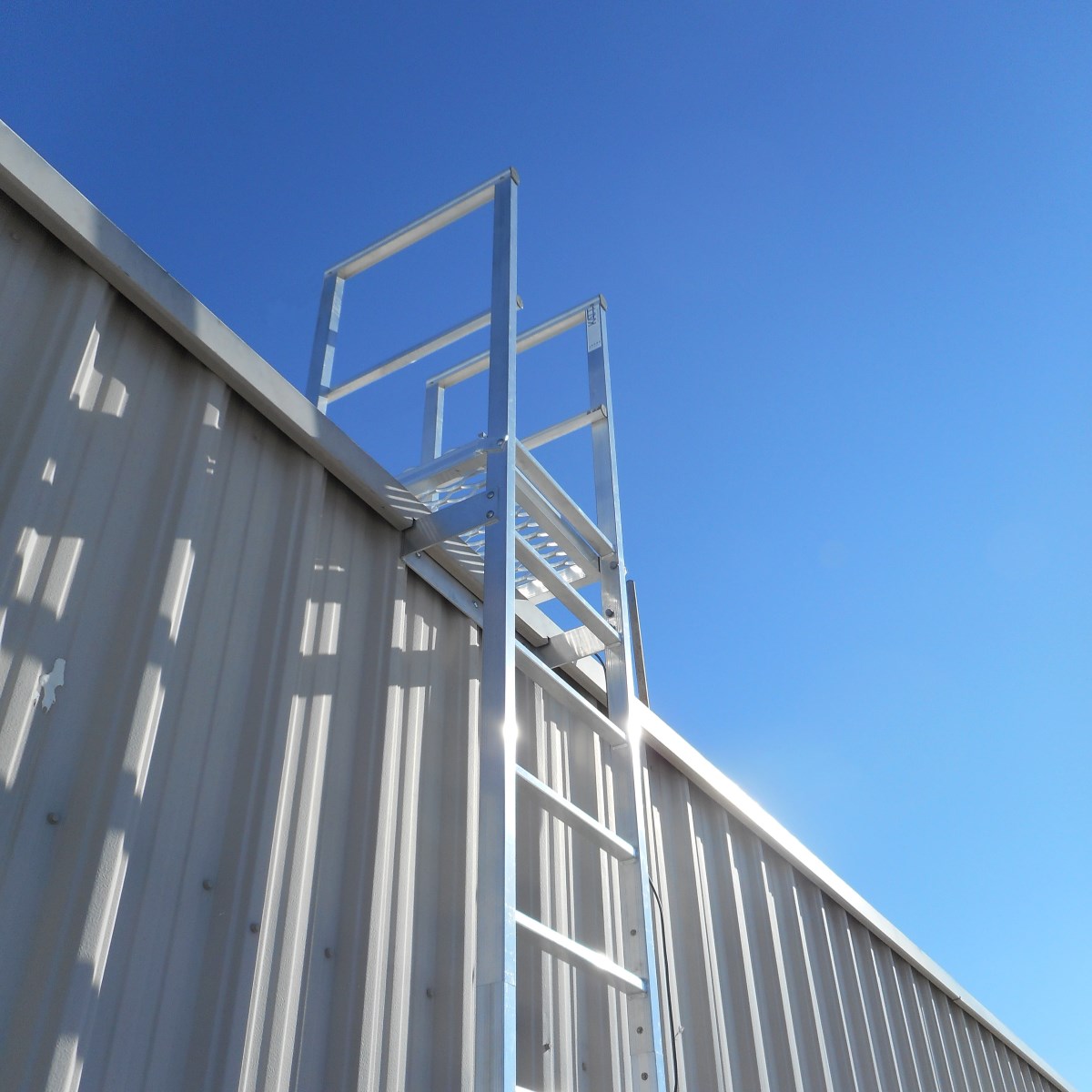
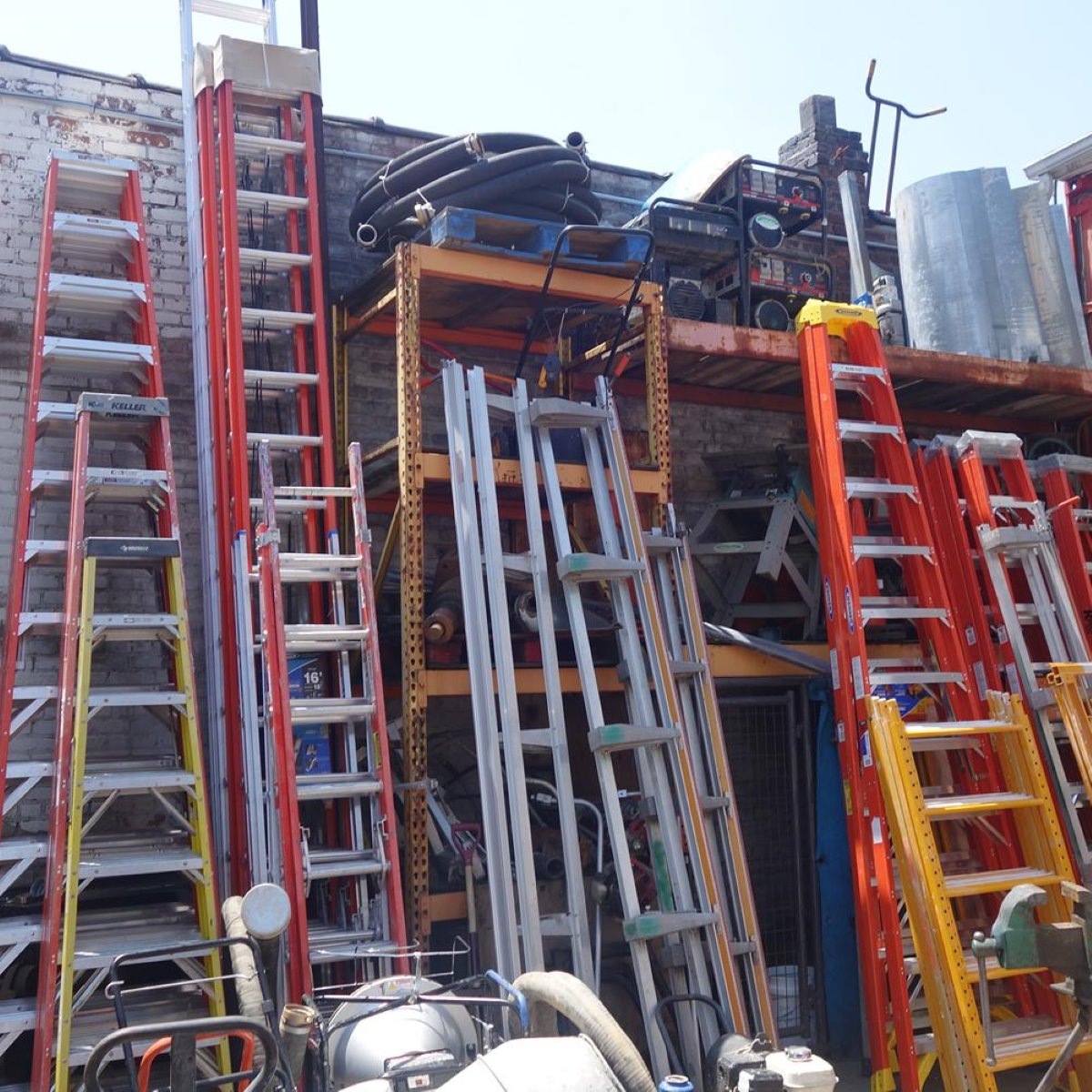
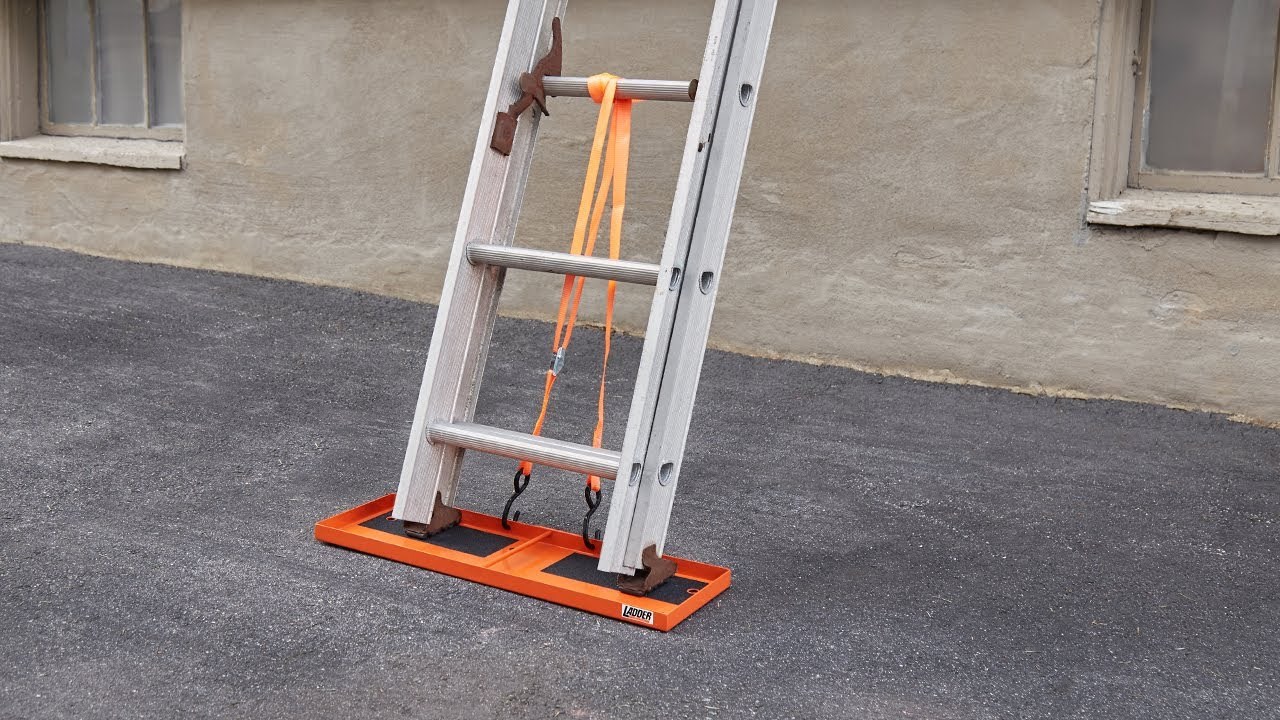
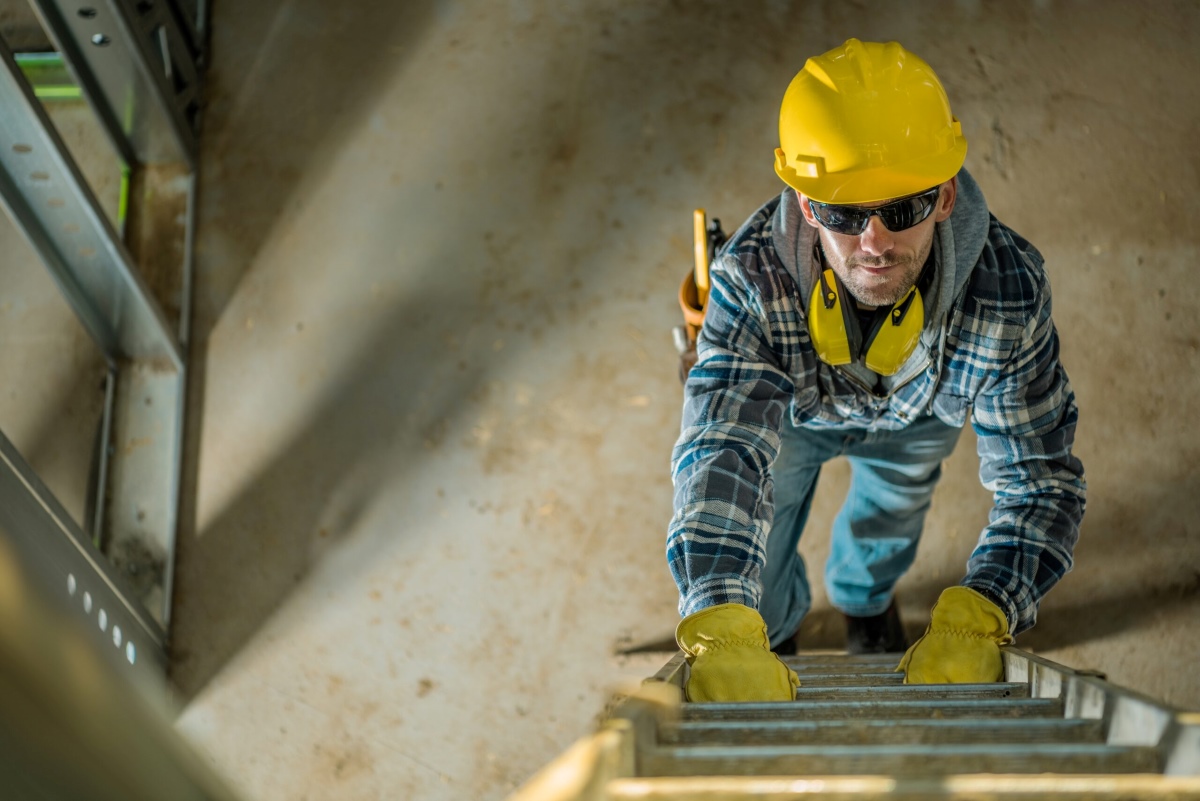
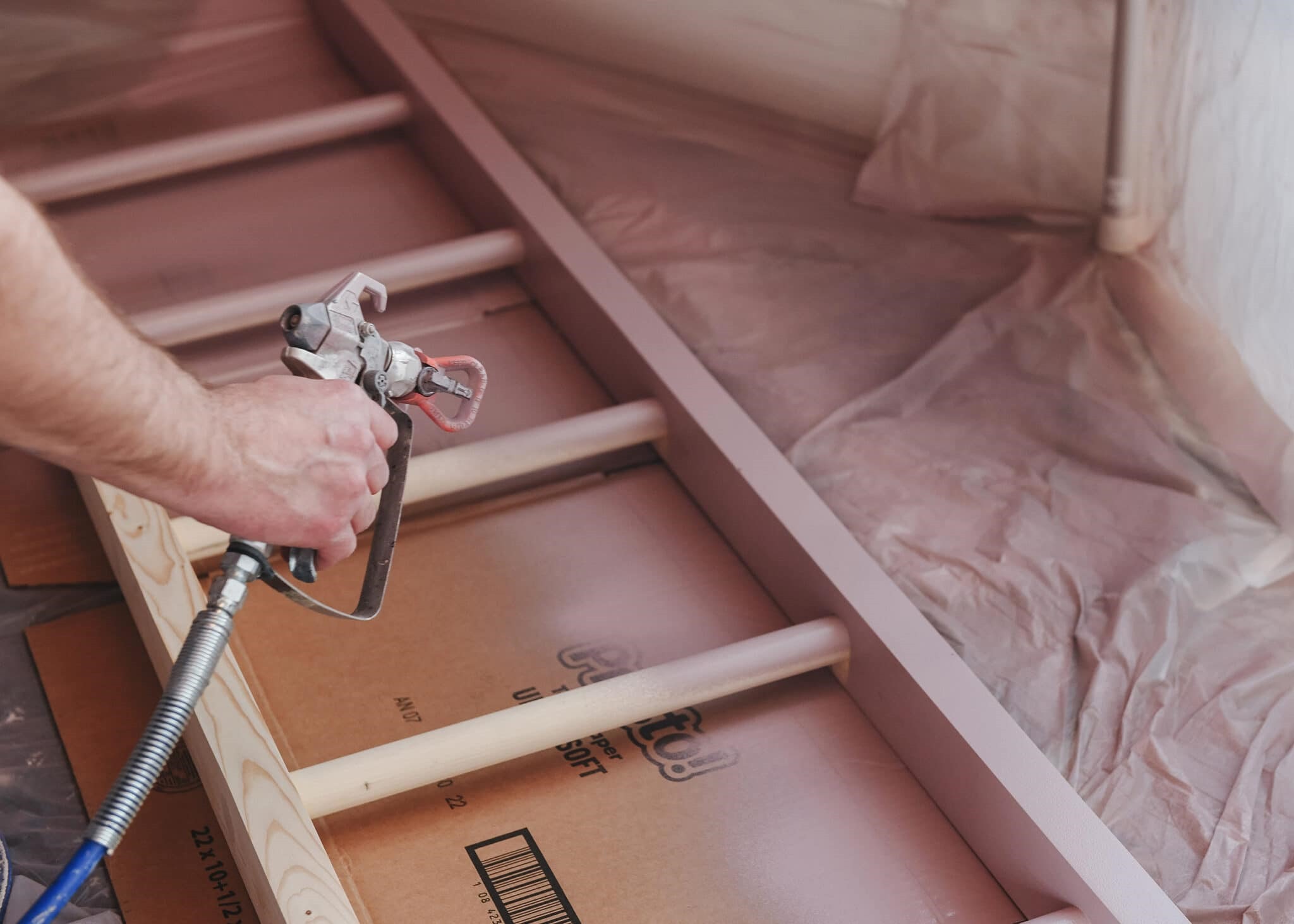
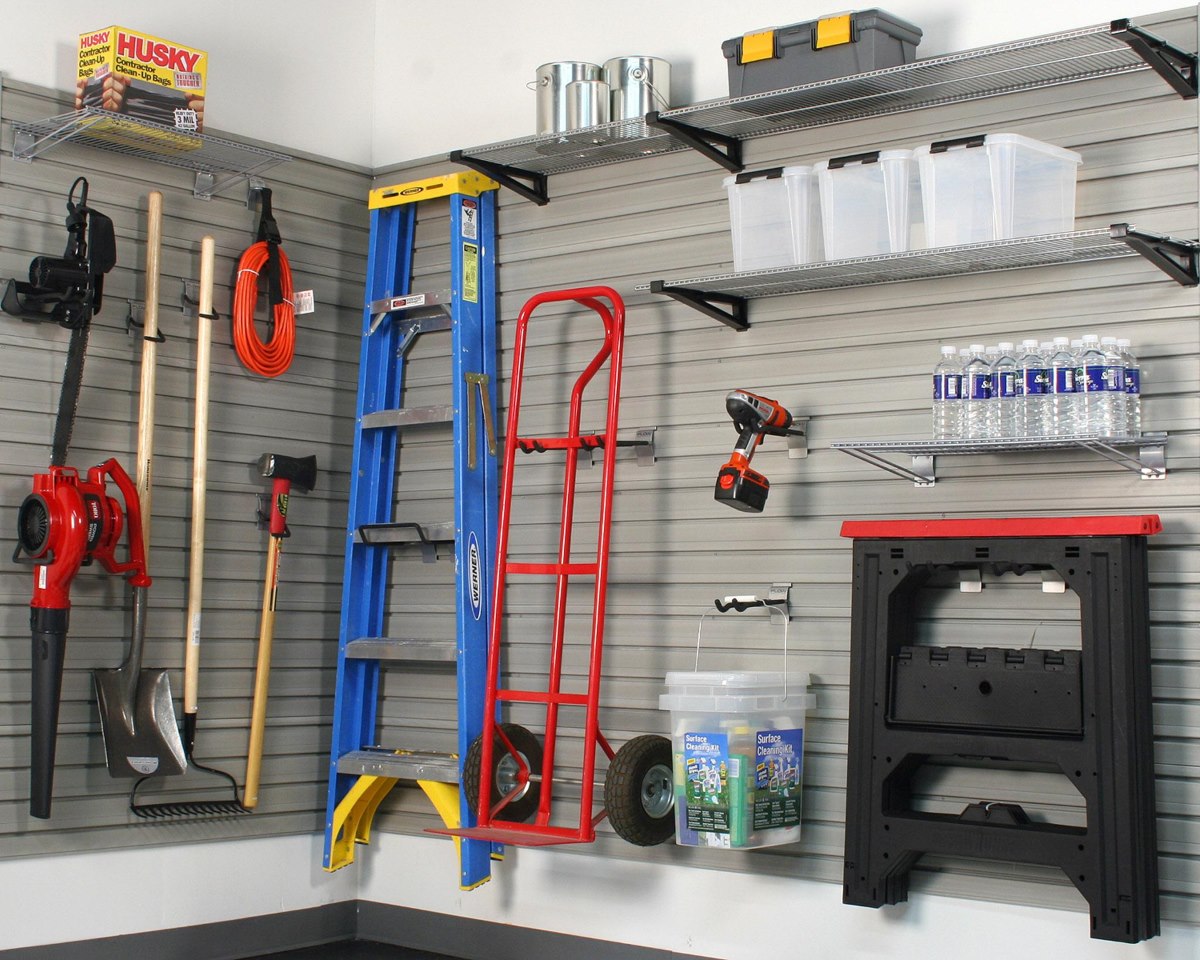

0 thoughts on “How To Carry Ladder”